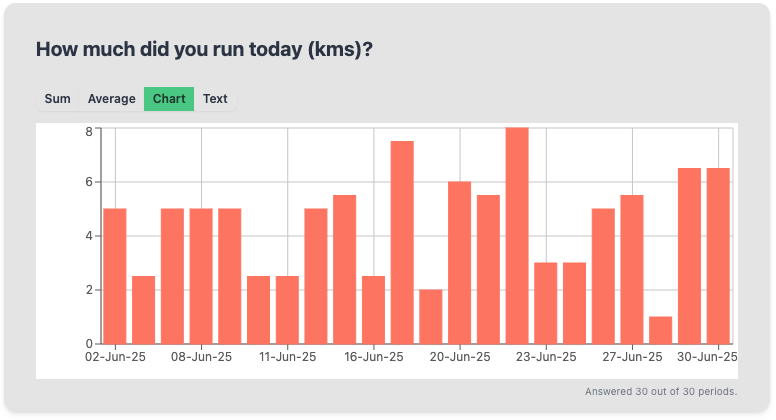Morning gym sessions produce noticeably better physical responses compared to afternoon or evening workouts, a pattern that has become clear after several consecutive days of early exercise. The body responds differently to physical exertion depending on timing within the circadian cycle, with morning workouts aligning with natural cortisol peaks that prepare the body for activity and stress. Starting the day with exercise creates a cascade of physiological and psychological effects that extend through the remainder of waking hours, including sustained energy levels, improved mood regulation, and a sense of accomplishment that influences subsequent decisions. The transition to morning workouts required adjustment to earlier wake times and initial discomfort exercising before the body feels fully awake, but these costs diminish quickly as new habits form. After maintaining this pattern for several days, the benefits have become sufficiently apparent to justify continued commitment despite the ongoing challenge of early alarm times and reduced flexibility in morning schedules.
The physiological advantages of morning exercise relate primarily to hormonal rhythms and metabolic processes that follow predictable daily patterns. Cortisol levels peak naturally in the early morning hours, providing energy and alertness that support physical performance while helping the body manage exercise stress. Growth hormone secretion also runs higher during morning hours compared to later in the day, potentially enhancing muscle recovery and adaptation from training stimulus. Body temperature rises gradually through morning and peaks in late afternoon, which partially explains why maximum strength and power output typically occur later in the day. However, for moderate-intensity cardio and resistance training rather than maximum effort lifts or sprints, the slight disadvantage in peak performance capacity gets outweighed by better overall energy availability and reduced interference from accumulated daily fatigue. Exercising before food intake occurs while glycogen stores remain at moderate levels from overnight fasting, potentially enhancing fat oxidation during cardio work though the magnitude of this effect is modest for typical workout intensities and durations.
The psychological and behavioral benefits of morning workouts often exceed the direct physiological advantages, creating positive feedback loops that support both exercise consistency and broader daily functioning. Completing a workout first thing eliminates the mental burden of an uncompleted task hanging over the remainder of the day and removes the risk that evening obligations or fatigue will derail exercise plans. This guaranteed completion of a difficult but valuable task generates momentum that influences subsequent decisions throughout the day, making it easier to maintain other beneficial behaviors like choosing nutritious meals or avoiding time-wasting activities. The phenomenon reflects both genuine willpower conservation where early success preserves decision-making capacity for later challenges and identity reinforcement where morning exercise confirms self-conception as someone who makes disciplined choices. Post-exercise endorphin release and improved mood persist for several hours, making morning workouts more likely to influence daily emotional tone than evening sessions whose effects occur primarily during sleep. The shower and preparation that follow exercise create natural transition time between waking and work that feels more purposeful than scrolling through phones or rushing through breakfast.
The practical challenges of morning workouts involve sleep requirements, schedule coordination, and initial physical discomfort that must be overcome before benefits become apparent. Exercising at six or seven in the morning requires waking by five-thirty to allow time for minimal food intake, transportation to the gym, and warm-up before starting actual training. This pushes necessary bedtime to ten or ten-thirty to maintain adequate sleep duration, requiring evening schedule adjustments and discipline about winding down activities. The first several days of early workouts feel particularly difficult as the body adjusts to exertion while not fully awake, with exercises feeling harder than they do at midday when alertness peaks naturally. Muscle stiffness from overnight immobility makes warming up especially important to prevent injury, adding time to sessions. Social and professional obligations that occasionally require early meetings or travel create scheduling conflicts that interrupt consistency. Gym crowding patterns also vary by time, with morning sessions potentially encountering different equipment availability than afternoon slots depending on local demographics and work schedules.
The sustainability of morning workout routines depends on whether the benefits continue justifying the costs as novelty fades and the pattern becomes routine rather than achievement. The initial period of any habit change generates motivation from progress and the satisfaction of maintaining commitment to stated intentions. This temporary boost eventually disappears, leaving only the actual long-term value of the behavior to sustain it. For morning workouts, the key question is whether the superior physical feeling and daily momentum generation remain sufficiently valuable after several weeks or months to justify ongoing early wake times and reduced schedule flexibility. The answer likely varies by individual circumstances including natural chronotype, commute requirements, evening obligations, and exercise goals. People with genuine morning preference who feel alert quickly after waking will find morning workouts more sustainable than those whose energy peaks later in the day. Those living close to gym facilities or exercising at home face lower friction than those requiring significant travel before training. Individuals with variable work schedules or frequent early meetings may find consistency difficult to maintain. The current positive assessment after several days suggests the pattern merits continued trial, but the true test comes after the initial enthusiasm subsides and morning workouts become just another part of routine rather than a deliberate experiment. If the physical energy benefits and daily momentum effects continue being noticeable after a month, that would provide strong evidence for permanent schedule adjustment despite the ongoing costs of earlier wake times.

